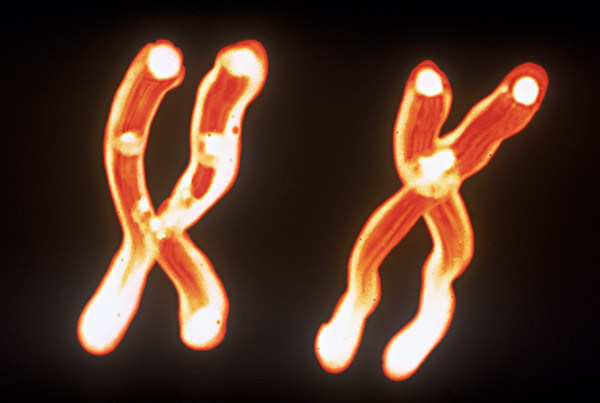Oct. 12, 2023 Research Highlight Biology
DNA’s backup plan for genomic stability
Complementary epigenetic pathways safeguard against DNA failures that could lead to problems in gene regulation and stability
The proper functioning of an important architectural component of our DNA, known as heterochromatin, is maintained by at least two pathways that can substitute for one another when either is lost, RIKEN researchers have found1. This finding provides a remarkable insight into how these complex biological systems include redundancy to keep our cells healthy.
Mammalian genomes are complex systems that require a wide variety of chemical tags known as epigenetic modifications to function properly. Heterochromatin—a tightly packed form of mainly genetically inactive DNA that is associated with gene repression and chromosome integrity—exists in large, condensed compartments, wrapped around histone proteins that are studded with such epigenetic modifications.
Kei Fukuda from the RIKEN Cellular Memory Laboratory and his colleagues have been studying this histone modification, known as the histone H3 lysine 9 trimethylation (H3K9me3) pathway, for some time.
Suspecting that this pathway is essential for the proper spatial organization and compaction of heterochromatin, the team decided to see what would happen when it was lost. They engineered mouse cells that lacked the five methyltransferase proteins responsible for the methylation pathway.
“Surprisingly, chromatin compaction and nucleus spatial organization remained largely unchanged in these cells,” says Fukuda.

Figure 1: Complementary epigenetic pathways preserve the integrity of chromosomes by maintaining the form of heterochromatin. © Steven Puetzer/The Image Bank/Getty
They saw that another kind of epigenetic modification, H3K27me3, which is usually seen on different parts of the chromosome, was redistributed to the places where H3K9me3 is usually observed—mostly the centromeres and telomeres—to maintain the proper organization of the heterochromatin.
Only when the researchers also blocked the H3K27me3 methyltransferases did the heterochromatin lose its spatial organization, leading to chromosome instabilities and abnormal gene expression. Even then, some regions of the genome were able to maintain their heterochromatin, suggesting there is at least one more epigenetic pathway that plays a role in heterochromatin maintenance.
“We thought H3K9 methylation was the main factor for maintaining heterochromatin organization,” says Fukuda. “But we found that it wasn’t essential—other chromatin modifications function in a redundant way to maintain heterochromatin.”
Heterochromatin anomalies are seen in many diseases, including cancer and brain diseases, as well as during aging. In fact, decreased H3K9me3 and the redistribution of H3K27me3 have been seen before in aging cells, says Fukuda, although how the two are related is largely unknown.
This work could help to advance our knowledge in that area, Fukuda says. “Using our cells can help to address those questions about chromatin redistributions and redundant mechanisms of heterochromatin organization in aging or other diseases,” he says.

Yoichi Shinkai (left), Kei Fukuda (center), Chikako Shimura (right) and co-workers have found that multiple epigenetic modifications form redundant pathways to maintain genetic stability.© 2023 RIKEN
Related contents
- A genome-wide knockout screen reveals genes needed for retroviral element silencing
- The workings of a gene silencer
- Mapping the chromatin landscape reveals determinants of placental stem cell identity
Rate this article
Reference
- 1. Fukuda, K., Shimi, T., Shimura, C., Ono, T., Suzuki, T. Onoue, K., Okayama, S., Miura, H., Hiratani, I., Ikeda, K. et al. Epigenetic plasticity safeguards heterochromatin configuration in mammals. Nucleic Acids Research 51, 6190–6207 (2023). doi: 10.1093/nar/gkad387
